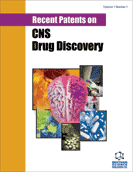Abstract
Cancers of the brain are intrinsically more complicated to treat than systemic malignancies due to the unique anatomical features of the brain. The blood-brain barrier prevents chemotherapeutic agents from reaching brain neoplasms, and angiogenesis occurs as the metabolic needs of the tumour increase, thus further complicating treatment. The newly formed blood vessels form the blood-tumour barrier and are distinct from the blood-brain barrier in that they are more permeable. Being more permeable, these abnormal blood vessels lead to the formation of peri-tumoural edema, which is the cause of much morbidity and mortality associated with central nervous system neoplasms. While the cause of the increased permeability is unclear, kinins have been implicated in regulating the permeability of normal vasculature. Kinins are also known to exert many inflammatory actions affecting both normal and angiogenic blood vessels, as well as tumour cells. The vasodilatory and vascular permeabilizing effects of kinins, and particularly bradykinin and substance P, have been investigated with regard to delivery of chemotherapeutic agents to neoplastic brain tissue through both vascular barriers. In contrast, kinin receptor antagonists have been found to exert effects on tumour cells that result in decreased angiogenesis, tumour cell motility and growth. Thus, many recent patents describe kinin activity on brain vasculature, which may play an integral role in the development of treatments for malignancies in the central nervous system through amelioration of angiogenesis. In conjunction, patents that discuss the ability of kinins to decrease tumour cell migration and proliferation demonstrate that kinins may offer novel approaches to brain tumour therapy in the future.
Keywords: CNS tumours, glioma, kinins, blood-brain barrier, substance P, bradykinin, cancer, glial cells, malignancies, central nervous system (CNS), neoplasms, radiation therapy. Surgery, brain malignancy, neurological symptoms, intracranial hypertension, seizures, reduction in focal neurological deficits, MRI, Whole brain radiation therapy (WBRT), Stereotactic radiosurgery (SRS), dose, radiation necrosis, metastatic brain, blood cerebrospinal fluid barrier, glioblastoma multiforme, arterial infusion, Corticosteroids, cerebral capillary endothelial cells (CCEC), tumour cells, tachykinin, brain capillary endothelial cells, parenchyma, oxygen, carbon dioxide, proliferation of tumours, vasoconstrictive agents, vascular endothelial growth factor (VEGF), growth, progression, blood plasma, high molecular weight kininogen (HMWK), kallidin, sensory neurons, antagonists, breast origin, chromosome, polypeptide, immunoglobulin production, melanoma, DNA synthesis, mitotic, neoangiogensis, cytokines, vasodilative, vasogenic, Edematous fluid, absorption, ventricles, astrocytes, microvessels, hypo-osmolality, augmenting, ischemia, reperfusion injury, potassium channels, nitric oxide synthase, Radiopharmaceuticals
 21
21





















